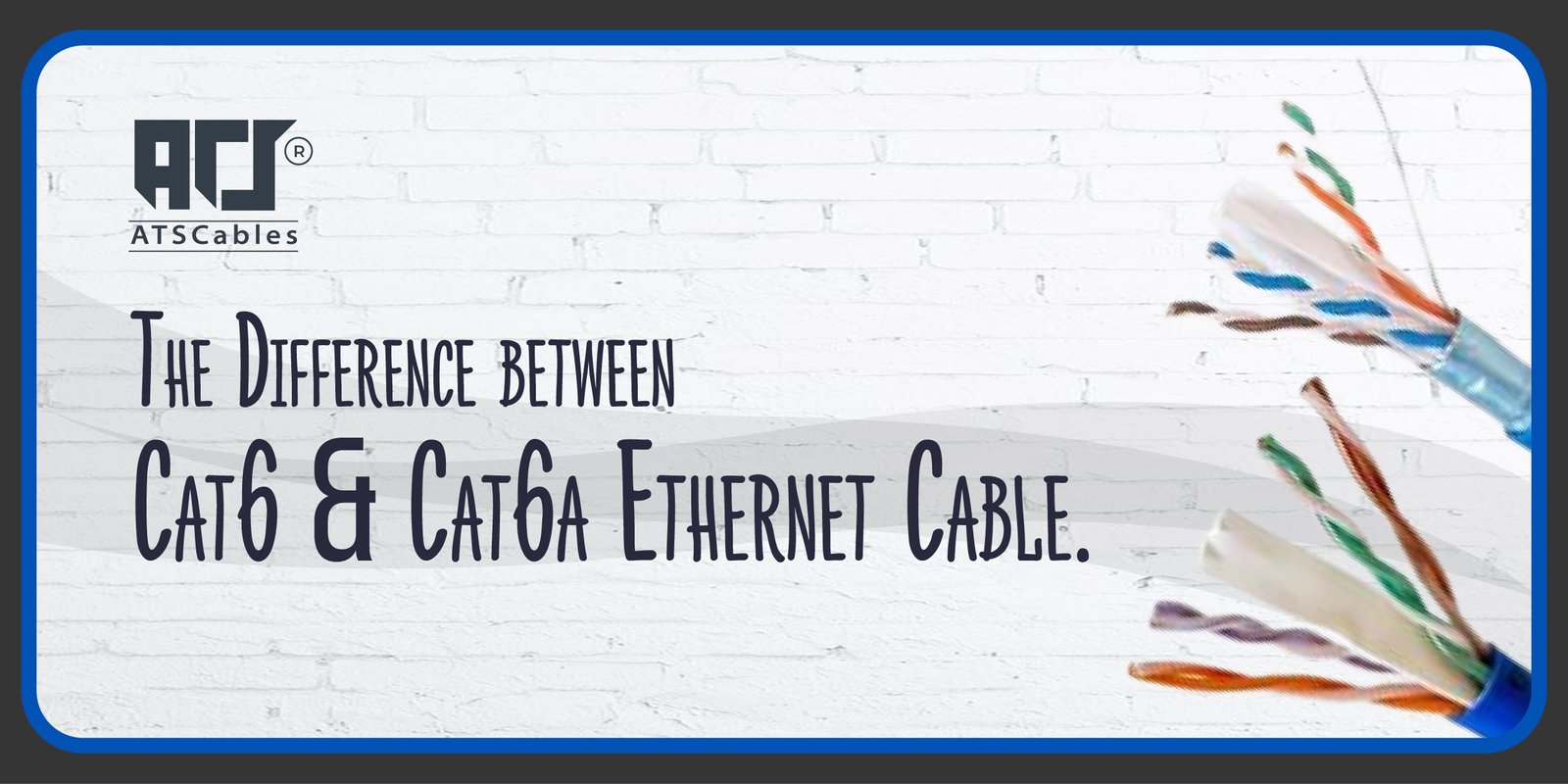
The Difference Between Cat6 vs. Cat6A Ethernet Cable for Gaming and Home Entertainment Systems
When you’re setting up your gaming or home entertainment system, one thing you don’t want is lag. A wired connection is still the best way to keep things fast and smooth. Ethernet cables, particularly Cat6** and Cat6A, are popular choices for this.
But what exactly sets them apart? Choosing the right cable for your system can make all the difference in performance. Let’s take a closer look at how cat6 vs. cat6a Ethernet cables stack up when it comes to gaming and home entertainment.
Cat6 and Cat6A Similarities
First off, both Cat6 and Cat6A cables are built with twisted pairs of wires inside. This twisting helps cut down on interference, making sure your connection stays reliable.
Physical Construction
Both use the same RJ45 connectors, the little clip-style connectors you’re probably already familiar with. These connectors make it simple to plug into any standard Ethernet port, from your gaming console to your streaming device.
Gigabit Ethernet Support
When it comes to Gigabit Ethernet, both Cat6 and Cat6A Ethernet cables are up to the task. They both support speeds of up to 1 Gbps, which is what many modern gaming and home networks run on. If you’re into gaming or streaming music, this speed is plenty fast for most activities.
Whether you’re battling it out in an online game or streaming your favorite songs in high quality, both cat6 and cat6a can get you there without breaking a sweat.
Backward Compatibility
Another win for both cable types is backward compatibility. You don’t need to worry about replacing all your old hardware. Whether you’re using a Cat6 or Cat6A cable, they will work fine with older routers, modems, or switches. This makes them a great choice if you’re upgrading your cables but aren’t quite ready to overhaul your entire setup.
Common Use Cases
When it comes to casual gaming, HD streaming, or jamming out to some music, both Cat6 and Cat6A cables perform well. For most home entertainment systems, either will handle these tasks without a hitch. If you’re gaming solo or just watching a movie, the differences between cat6 vs. cat6a won’t make much of an impact on your experience.
Cat6 vs. Cat6A Differences
Choosing between cat6 versus cat6a depends on what you need. For a smaller setup or simple gaming needs, Cat6 will get the job done. But if you’re looking to stretch your network further or want that extra edge in performance, Cat6A is the better option, even if it costs a little more. Here are some key differences to know before you make a choice.
Data Transmission Speed and Bandwidth
Let’s talk speed. Cat6 supports speeds up to 10 Gbps, but only over shorter distances—around 55 meters. So if your gaming setup is in a smaller room or home, Cat6 should be enough to keep your connection fast and strong.
But here’s where Cat6A steps it up. The cat6a max speed is also 10 Gbps, but it can maintain this speed over distances up to 100 meters. So, if you’ve got a bigger home or your router is tucked away in another room, Cat6A gives you that extra reach without losing speed.
Crosstalk and Shielding
One of the biggest advantages of Cat6A is its improved shielding. It does a better job of reducing something called “crosstalk,” which is when signals from different wires start interfering with each other. This is where cat6 shielded cables help, but Cat6A goes further.
With a cat6a ethernet cable dual riser/plenum design, which adds extra shielding, you get even more protection from interference. This is especially helpful in homes or apartments where multiple cables are close together. If you’re running several devices at once, this extra shielding means less lag and smoother gaming.
Gaming and Streaming Performance
When it comes to performance, Cat6A can make a real difference if you’re a heavy user. If your household is running multiple devices—think someone streaming a movie in one room while you’re gaming in another—Cat6A offers more consistency.
It can handle higher data loads better than Cat6, meaning fewer slowdowns and interruptions. For serious gamers or those with multiple 4K streams going at once, Cat6A might be the better pick.
Cable Thickness and Installation
On the downside, Cat6A cables are generally thicker than Cat6. If you’re running cable through tight spaces or behind walls, this extra bulk can be a pain to deal with. Cat 6a cabling is often less flexible and more difficult to install, especially in cramped home setups.
While Cat6 is easier to work with and can bend around corners more easily, Cat6A is a bit of a beast in comparison. So, if you’re DIY your setup, keep this in mind.
Cost Considerations
Finally, let’s talk dollars and cents. Cat6A cables, such as a 500 ft. Cat6A cable generally costs more than Cat6. You’re paying for that extra shielding and long-distance performance. For most casual users, Cat6 is perfectly fine and easier on the wallet.
But if you’re looking to future-proof your network or need top-notch performance, the higher cost of Cat6A might be worth it. You can find cat6a patch cables or bulk cat6 patch cables online but expect Cat6A to have a higher price tag, especially if you’re looking at larger lengths.
Conclusion
At the end of the day, Cat6 and Cat6A are both solid choices for gaming and home entertainment systems. If you’re a casual user with a simple setup, Cat6 should meet all your needs. It’s easier to install, cheaper and will handle most gaming or streaming tasks with ease.
But, if you’ve got a bigger space, multiple devices running, or you just want the best performance possible, Cat6A might be the way to go. With its longer reach, better shielding, and ability to handle heavier data loads, Cat6A can future-proof your setup for years to come. You can get either one from ATS Cables without any trouble!
FAQs
What is the difference between Cat6 and Cat6A cables?
The main difference lies in speed and distance. Cat6 supports 10 Gbps up to 55 meters, while Cat6A maintains that speed over 100 meters. Cat6A also offers better shielding, which reduces interference and crosstalk more effectively than Cat6.
Cat6 vs. Cat6A: Which is best?
For most home users, Cat6 will be sufficient for gaming and entertainment systems. However, if you’re dealing with longer distances, a more complex network, or multiple high-bandwidth activities, Cat6A is the better choice due to its enhanced performance over greater distances and better shielding.
keep connected
Get updates by subscribe our weekly newsletter

